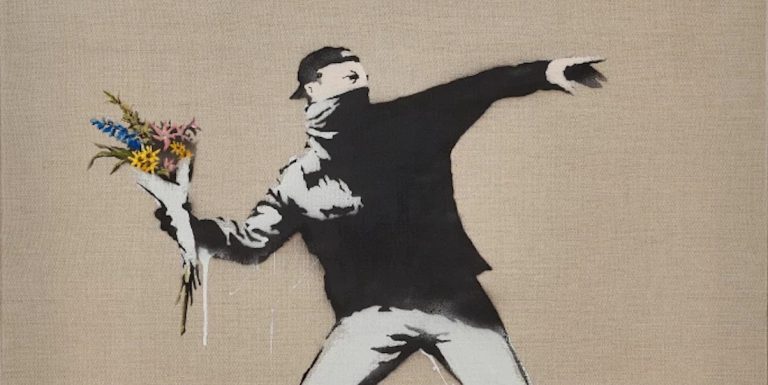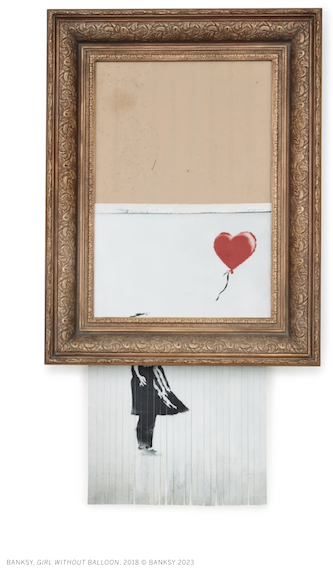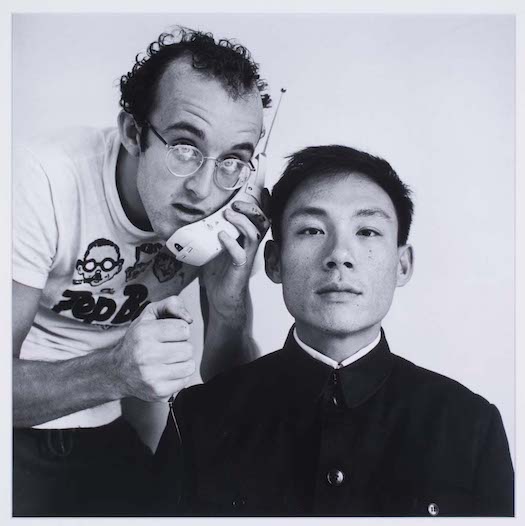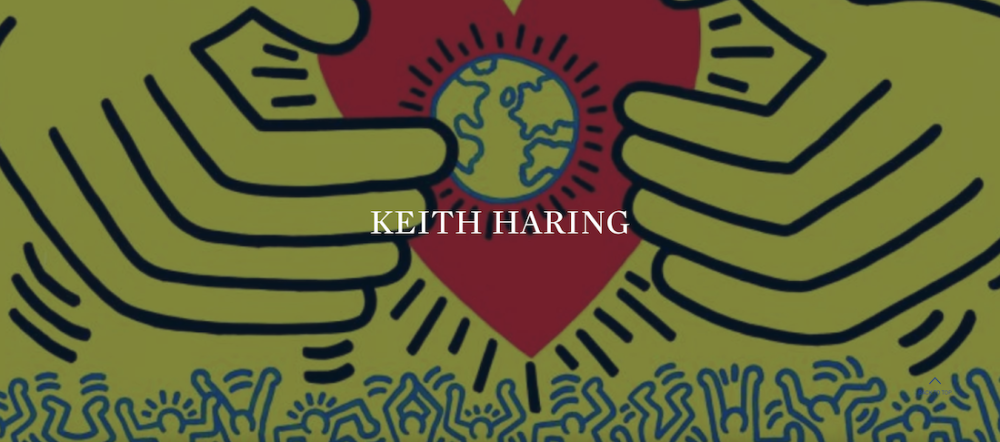
Two visionary artists, separated by decades, unite in a Seoul exhibition exploring their shared impact on global street art culture.
New York, N.Y. — When it comes to the world of street art, few names resonate as powerfully as Keith Haring and Banksy. Haring, a Pennsylvania-born artist, rose to prominence in 1980s New York, transforming the city’s subways into vibrant canvases.

Banksy, the enigmatic figure from Bristol, England, remains the most famous living street artist, his identity still shrouded in secrecy.
Now, the exhibition “Love in Paradise: Banksy and Keith Haring” at Paradise Art Space in Seoul brings these two creative forces together in a compelling dialogue that crosses generations and continents.
Rebels With a Cause: Haring and Banksy’s Parallel Paths
“Both Haring and Banksy elevated themselves out of the clandestine subculture of street art, and into the public consciousness using the most visible public spaces to reach their audience,” notes the exhibition’s feature article.
For Haring, that meant New York’s “grungy underground subway billboards,” while Banksy’s work has appeared on “the sides of houses, shops and offices from Bristol to Birmingham.”
Outlaws and Outsiders: Defining a Movement
What unites these artists, beyond their chosen medium, is a “certain outsider swagger and Jesse James-style outlaw appeal.”
They have each operated with little regard for the traditional art world’s rules. As one critic observed, Banksy’s “chief achievement… was finding a way to operate so successfully outside the art world.”
The same could be said of Haring, who, like Banksy, cultivated a following that “sidesteps, or perhaps transcends, a traditional art audience.”
Banksy himself once wrote, “The quickest way to the top of your business is to turn it upside down.” This philosophy is evident in both artists’ approach to their work and careers, challenging conventions and redefining what it means to be a public artist.
Visual Language and Lasting Influence
In the secretive world of street art, “the borrowing of visual language, establishing open alliances and paying homages are the norm.” Haring’s bold, signature motifs—radiant babies, barking dogs, pyramids, crosses—have become touchpoints as familiar as Banksy’s stenciled children, rats, monkeys, and police figures.
The article highlights Banksy’s 2009 piece “Choose Your Weapon,”
which “features a classic Banksy stencil incorporating the iconic
Haring dog motif,” a direct nod to Haring’s enduring influence.
Both artists have transformed painted symbols into “street icons, an urban oasis in the midst of decay, poverty and other pervasive tragedies.” Their work is imbued with “a sense of urgency and purpose,” confronting social injustices head-on.
Social Commentary and Shared Themes
Haring and Banksy are united by their commitment to social engagement. Haring’s art was shaped by the AIDS epidemic and his advocacy for gay rights, nuclear disarmament, and anti-apartheid causes.
Banksy, meanwhile, tackles contemporary issues such as social unrest, authority, religious differences, and violence. Works like “Love is in the Air” (2006) and “Rude Copper” (2003) exemplify his sharp, often satirical commentary.
Yet, as the Sotheby’s article notes, “his sense of comedy means that his message never becomes too dogmatic or bombastic.” Even in moments of self-reflection, Banksy maintains a wry humor.
Describing his 2006 Los Angeles exhibition “Barely Legal,” he quipped: “Some of the paintings have taken literally days to make. Essentially, it’s about what a horrible place the world is, how unjust and cruel and pointless life is, and ways to avoid thinking about all that.”


Collaboration, Community, and Celebrity
Connection and collaboration are central to both artists’ legacies.
Haring’s circle included luminaries like Jean-Michel Basquiat and Tseng Kwong Chi, and he mentored young artists such as LAII (Angel Ortiz).
He also worked with celebrities like Madonna, Grace Jones, and Vivienne Westwood.
Banksy, for their part, has collaborated with the British band Blur, provided safe spaces for young graffiti artists, and designed a Union Jack vest for musician Stormzy.
Performance, Transience, and Power of Art
Art’s transience is a recurring theme for both artists.
Haring once painted dancer Bill T. Jones for his first London show, while Banksy famously staged a “coup de théâtre” at a Sotheby’s auction, shredding his artwork “Girl with Balloon” live as the hammer fell.
Sotheby’s described the resulting piece, “Girl without Balloon,” as “the first artwork in history to have been created live during an auction.”

Universal Motifs, Enduring Legacy
Decades after Haring’s untimely death, his legacy continues to complement and challenge Banksy’s. Both have established “universally understood motifs to explore themes of contemporary interest.” Their art remains “an urban oasis,” offering both critique and hope in the face of adversity.
Banksy and Keith Haring: Street Art’s Enduring Dialogue (Originally published November 1, 2023)